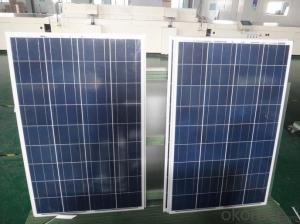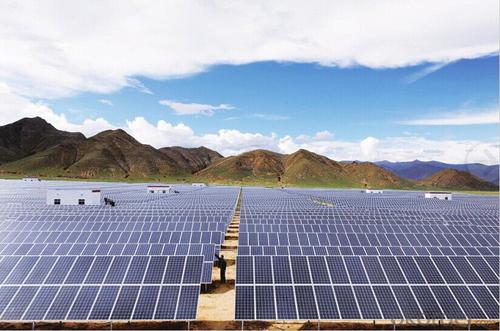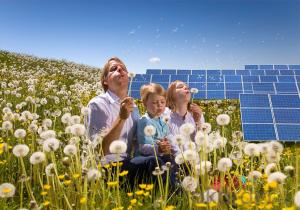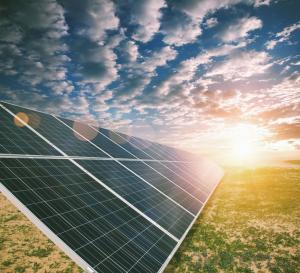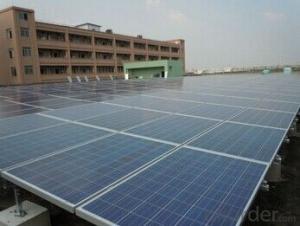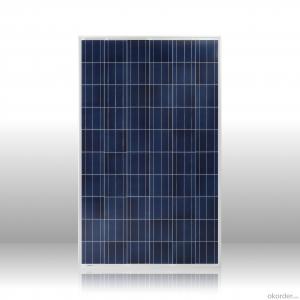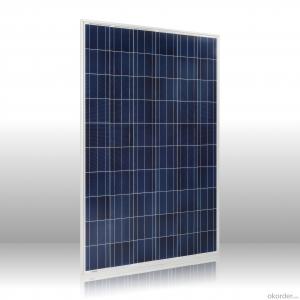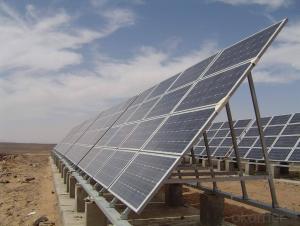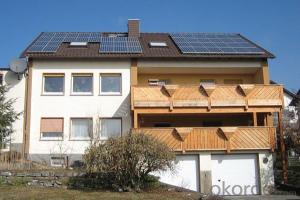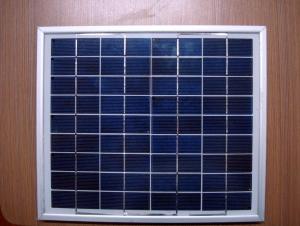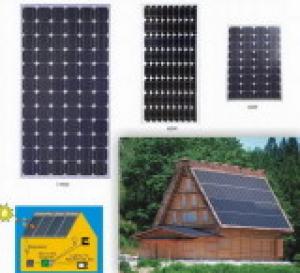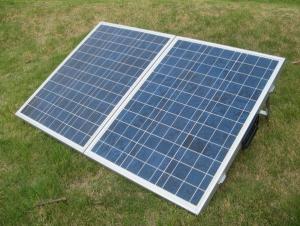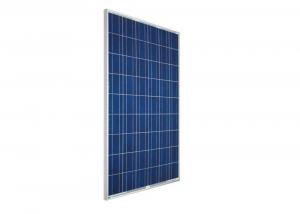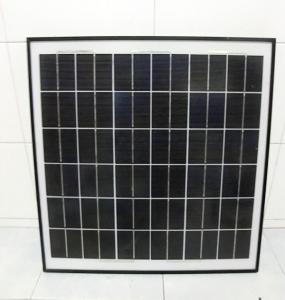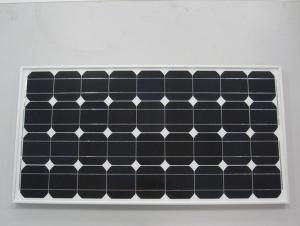Best Solar Panels Nz - High Efficiency 240W, 245W Photovoltaic Panel
- Loading Port:
- Shanghai
- Payment Terms:
- TT OR LC
- Min Order Qty:
- 364 pc
- Supply Capability:
- 30000 pc/month
OKorder Service Pledge
OKorder Financial Service
You Might Also Like
Specification
Poly Solar panel, solar module, 240W, 245W
Grid-connected photovoltaic power generation system is to photovoltaic systemsconnected to the public grid, achieve grid. Grid-connected PV systems can be divided into large and centralized and decentralized power generation systems and power generation systems small, two systems not require energy storage devices. Currently PV grid integration in the form of the building is a typical case of power generation.
Features:
1) Product name: solar panel / module
2) Solar cell: Mono-crystalline / Poly-crystalline / Amorphous
3) Tempered glass laminated with aluminum frame
4) Life time: 20 - 25 years
5) Temperature co-efficiency: A=+1,46mA B=-79mV, Rp/p=-0.43
6) Power specification at 1kW/m 2, AM 1, 5
7) Output cable: multi contact connectors
8) Construction:
a) Front: High-transmission 32mm tempered glass
b) Back: TPT
c) Encapsulant: EVA
9) Frame: aluminum
10) Certification: CE, TUV
| Module | 230 | 235 | 240 |
| Encapsulation | Glass/EVA/Cells/EVA/TPT | ||
| Tolerance | +3% | ||
| Size and Number of cells | 156mm×156mm 60(6×10pcs) | ||
| Maximum power | 230Wp | 235Wp | 240Wp |
| Open circuit voltage(Voc) | 36.00V | 36.00V | 36.00V |
| Short circuit current(Isc) | 8.59A | 8.77A | 8.96A |
| Maximum power voltage(Vmp) | 30.00V | 30.00V | 30.00V |
| Maximum power current(Imp) | 7.67A | 7.83A | 8.00A |
| Model size(mm) | 1650×991×40MM | ||
| Weight | 19.50Kg | ||
| Operating Temperature | -40°Cto+85°C | ||
| Resistances | 227g Steel Ball Fall Down From 1M Height and 60M/S Wind | ||
| Warranty | Pm is not less than 90% in 10 years and 80% in 25 years | ||
ADVANTAGES:
We produce solar cell by ourself with full automated production line, equipments were imported from USA, Germany and italy;
We provide 15 years warranty, and 25 years working life;
We have full set quality certificates, product meets quality requirement of USA, Europe, Australia, UK etc ;
70% of our product exported to Europe, without quality claims up to now;
There're 7 major inspection procedures for Each piece solar panel during production :
3 times EL testing to ensure panel without micro-break/invisible break(normal manufacturer only test 1 or 2 times);
3 times appearance inspection to ensure panel without defect (normal manufacturer only inspect 1 or 2 times);
1 time power testing, power inspection tolerance +/-0.1watt(normal manufacturer's power inspection tolerance is +/- 1-2watt), we ensure each panel has enough power output;
besides the standard inspection, each production procedure will inspect the upwards procedure;
So we guarantee each piece of our panel has perfect appearance, positive power performance, and without quality hidden trouble.
Manufacture pictures:

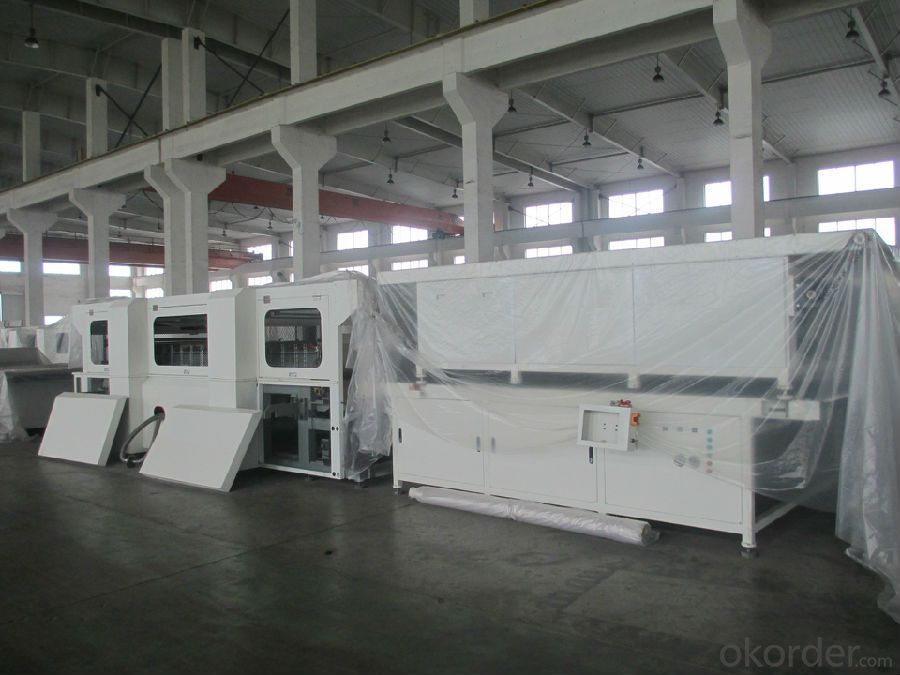
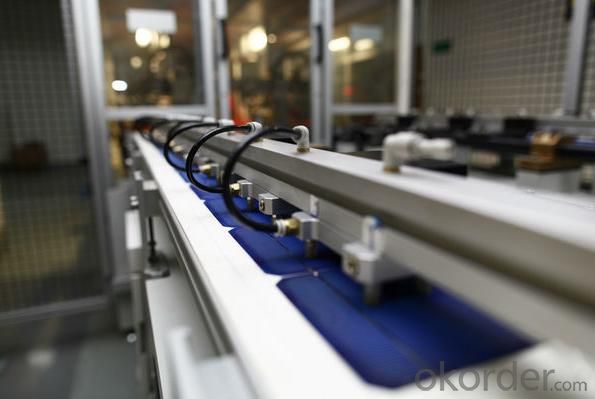
- Q: I'm a carpenter, and can do electric work. I want to make some money installing Solar Panels. what's the best source?
- Wow. This is a big question. First, are you in the United States? If so, then I would look at a couple of web sites. First, I would look at joining ASES - the American Solar Energy Society. (Actually, I'd do this whether or not you were in the US) Their magazine will have ads and directorys and so forth for panel manufacturers, inverter manufacturers, rack vendors, metering companies, etc. At the very least, their web site will give you numerous links to popular panel manufacturers. Right now, it can be difficult to get panels in the US. My buying agent can't promise us a significant number of panels until at least late this coming fall. And prices are going up due to a silicon shortage at the moment. Still, you could probably get your hands on small quantities. You just might not be able to choose exactly which manufacturer you want. Also, I'd look into getting NABCEP certification. This is the North American Board of Certified Energy Practitioners. They provide a referral service for people looking for solar installers, and they may have a net work of members that could help get you started. Good luck!
- Q: Do solar panels require a specific orientation or angle for optimal performance?
- Yes, solar panels generally require a specific orientation and angle for optimal performance. The ideal orientation for solar panels is facing south in the Northern Hemisphere and north in the Southern Hemisphere to maximize exposure to sunlight. Additionally, the optimal angle of tilt varies depending on the latitude of the installation site to maximize energy production throughout the year.
- Q: I have a home in Manchester Tn and we have been slowly remodeling the home. It is about 200 sq ft of living space. Our normal electric bill is about 50 a month. We would like to add some solar panels to the home to help reduce the amount of the bill. How many panels do I need and what would be the cost? I am not trying to go completely of the grid but I would like to start somewhere and maybe over the years be able to add. What is your recommendation for a reasonable cost of under 2 to 3 k??
- Ok, well there are also other alternative energy sources, too, besides solar. There is tidal (but you need an ocean :] ), hydroelectric (river, stream, etc.), biomass/biofuels (burning garabage), geothermal (from within the earth, pipes in the earth), wind (windmills, wind, the sun to get wind), and there are others that don't come to mind. Solar energy would cost alot to be installed, and it would take up alot of space, but once installed it pays for itself and uses little to no labor. They all have positives and negatives. All of these are clean and renewable. Here are some sites that my teacher/professor gave us (we just ended alternative energy lesson.) Well I hoped this helped!
- Q: I've found something called maximum system voltage 000v on my 0 w panel nameplate. Its impossible for 0w to have 000v, right?
- System voltage is the total across the full chain of panels, when using multiple panels in series. It's what the insulation on the panel is rated to stand, to earth/ground, without breaking down. A device could have an output rating of V and still a 000V insulation rating. eg. if your 0W panel had an open-circuit voltage of 25V, the insulation is rated to stand up to 40 panels connected in series. (40 x 25 = 000V). And actually a 0W power source could be rated at 000V, if it's current rating was only 0 milliamps. (Though extremely impractical for a solar panel unit).
- Q: I have a panel that quot;deep breatheproduces at 4% efficiency, what can it power, It's about 4ft by 2ft
- Area is 4' * 2' * (0.3048m/ft)^2 = 0.743m^2. Incoming solar (assuming optimally oriented panel) averages about kW/m^2, so 743W max gross. 4% efficiency yields 300W. Most panels are about 0% - 5% efficient, which is about W. In either case, figure about /2 the theoretical efficiency for about 2 hrs per day. so, you can run something from 50 to 50W about 2hrs per day. Too small for any appliance except maybe a laptop or light bulb. Panels typically make about 2V, not enough to run household stuff anyway. Normally panels are used to charge batteries, then an inverter takes power from the battery to run your appliances. Good luck!
- Q: Mono-crystalline or poly-crystalline solar panel?
- All solar photovoltaics drop in efficiencies with higher temperatures but it isn't the 45+ C you have to worry about but rather the heat from the sunlight striking the panels. There are hybrid systems which passes water in pipes attached to the back of the solar panels to cool the panels and preheat the water for solar thermal collectors. The difference between mono-crystalline and poly-crystalline are that mono-crystalline are more efficient and more costly to make.
- Q: i would like to hook up a power outlet to a solar panelmy light system is 500watts will run for 8 hours/day between noon to 8PM.So what is the most effective system do I need?
- You will need at least 500 W of solar panels (probably more to cope with cloudy days), and a DC to AC inverter. Since you're going to 8pm you *may* want a battery bank system too for those shorter winter days.
- Q: I want to also know if the 0 watt rating on the solar panel is 0 watts per day or is it constantly adding 0 watts? Is there a time which the 0 watts is being added like 0 watts per second or 0 watts per minute and so on?
- You need more panel because it will take more than ones worth of sunshine to charge this battery so the battery will need to sit over night and wait to continue the charge. clouds will make the problem even worse. I use 24 - 00 Ah batteries with a 3500 watt system and I am using a 48 volt system. So my Ah = 24 X 00 / 4 = 600 Ah but this is at 48 volt so the watt hours are the same. But My computer puts the power where it is needed automatically. You have 25 watts for at best 0 hours per day = 250 Watt hours per day. That battery needs at least 200 x 2 = 2400 watt hours that does not take efficiency of any of the systems into account. As you can see this battery may never charge completely.
- Q: There are so many solar panels and kits it is very confusing. I need to know what exactly I would need if I had an underground home with no electricity. I want to be totally off the grid with solar power. Someone please explain to me in simple terms what exactly I need. Maybe give me a link to the right kit for me. Also are they easy to install? Are there instructions that I need to download?Thank you
- I okorder
- Q: I'm very interested in how solar panels work. I understand the bigger picture of how it can be used for solar heating or as a generator, but I'm lost at the smaller details. Things like: - Could my computer work on solar? It has a 900 watt power supply (this is excluding monitor/speakers) - if a panel is for example, a 60 watt panel, does this mean it will pump 60 watts a second into a battery? - Does solar heating make the water electrified?
- solar heating will not make the water electrified,solar energy be converted into heat energy which will heat water,there is no electricity but heat energy to make water hot,you will not worry danger of electricity leakage.
Send your message to us
Best Solar Panels Nz - High Efficiency 240W, 245W Photovoltaic Panel
- Loading Port:
- Shanghai
- Payment Terms:
- TT OR LC
- Min Order Qty:
- 364 pc
- Supply Capability:
- 30000 pc/month
OKorder Service Pledge
OKorder Financial Service
Similar products
Hot products
Hot Searches
Related keywords

